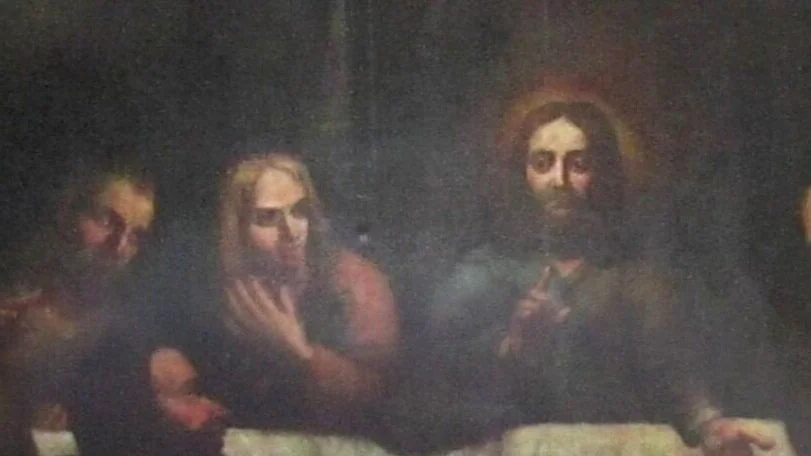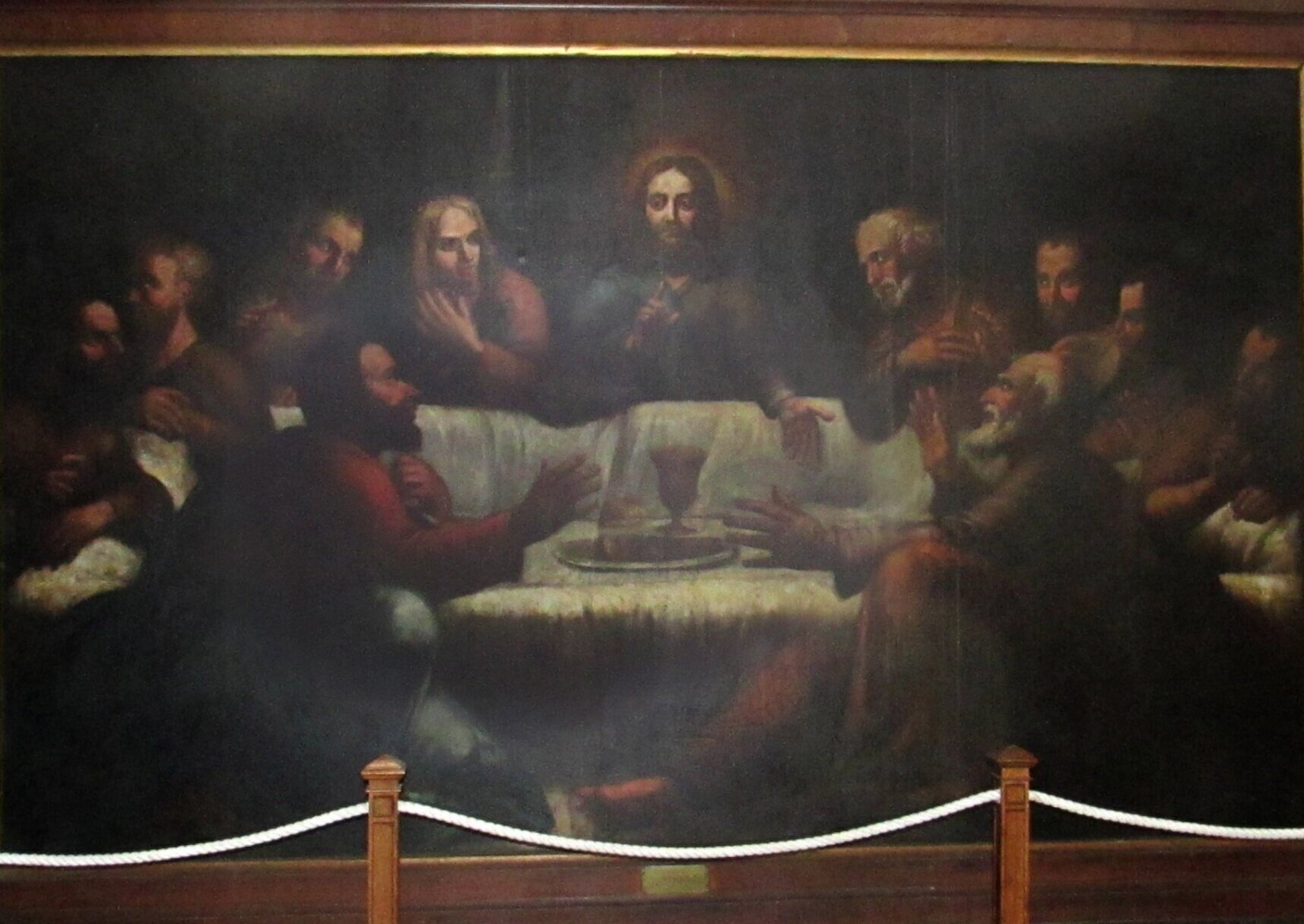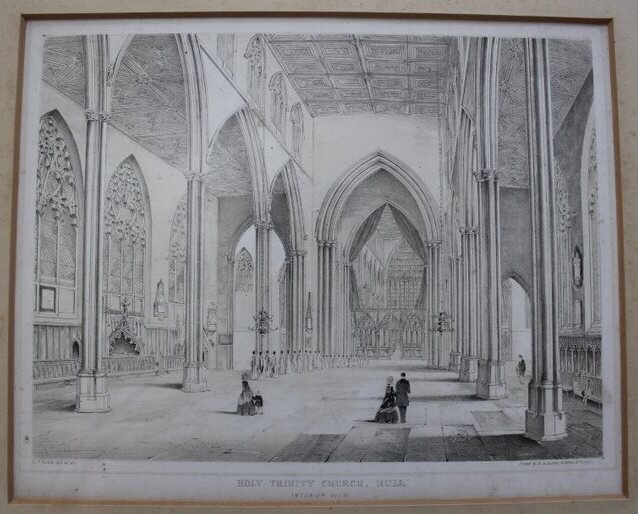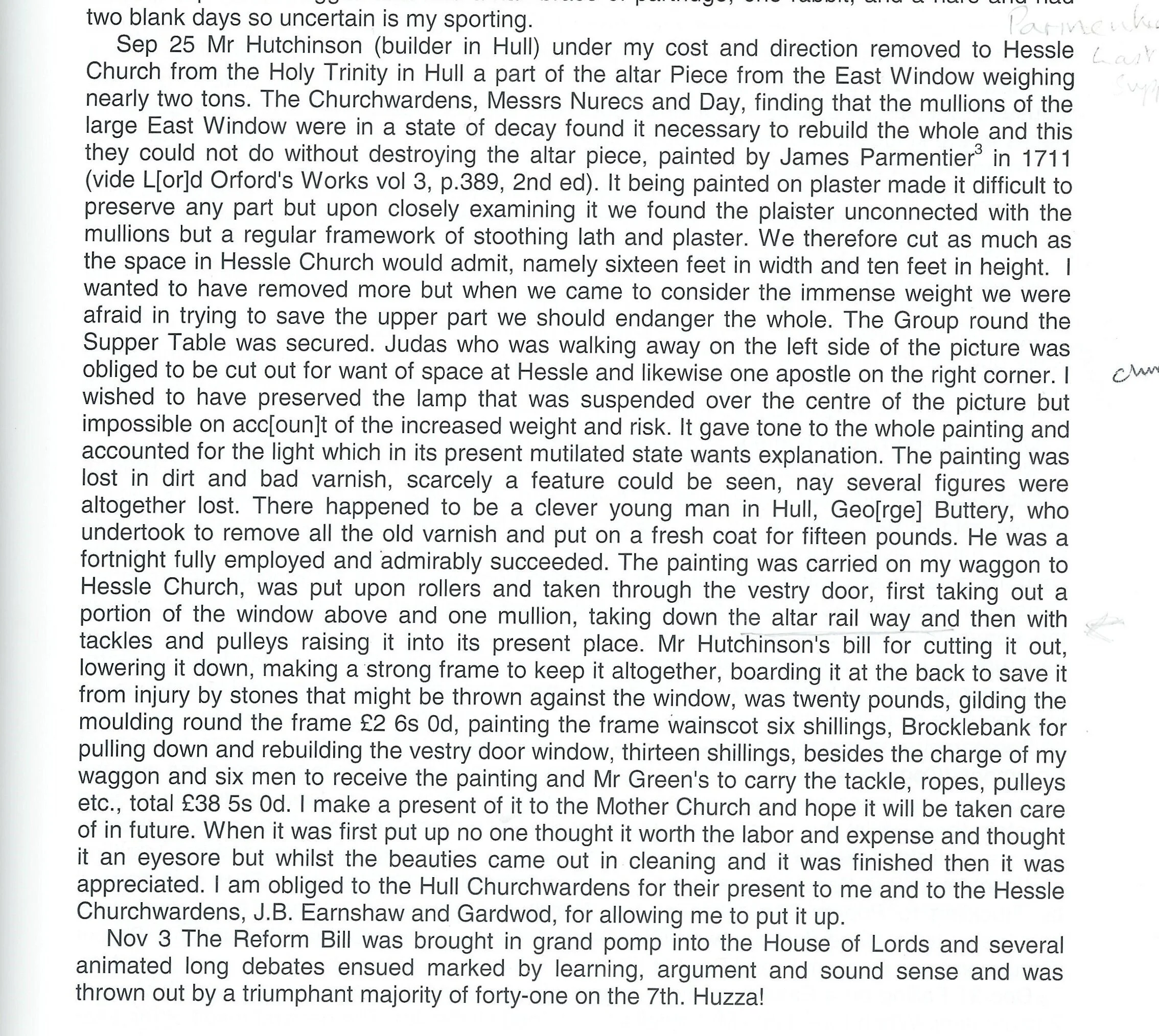The Lord’s Supper
Contributors - Jean Fenwick, Eve Johannson, Michael Free, Jane Owen
TThe Lord’s Supper by James Parmentier 1712
James Parmentier - The Lord’s Supper
James Parmentier (also known as Jaques Parmentier) was born in France in 1658 but came to England via Holland where he had been in the employment of William III. He continued to paint portraits in London, but as work dried up he travelled to Hull where he hoped to continue painting portraits of the wealthy. In 1711 Parmentier was engaged by Holy Trinity Church to paint a picture entitled "The Lord's Supper" at the east end of the church. It was to be a backdrop to an altar which was to be placed there.
The paining was completed and paid for on 14th May 1712. He was paid a princely sum of £50. In today's money this represents approximately £5000. In 1711 it was equivalent to 9 horses or 83 stones of wool or 555 days of skilled labour(https://www.nationalarchives.gov.uk/currency-converter)..
In 1796 John Tickell described the work: “over the Altar Piece (Communion Table) all is portrayed to the life; the Last Supper of our Blessed Saviour and his Apostles, which occupies a considerable space of the East Window. This is allowed by all who see it, to be a masterly piece of painting and does honour to the abilities of the artist, Monsieur Parmentier, who, notwithstanding it seems, met with a reward very inadequate to the excellency of his work”.
Holy Trinity Church
To the Reverend Thomas Clark vicar this plate is humbly dedicated published as the acts direct November 8, 1791 by Teeley and CEOT Brown or Milton and GW Brown
At this time the east end of the church had a shambles (or market) attached to the end, so the lower part of the east window was completely blank from the outside. The painting was designed to be a backdrop to the altar which resided against this eastern east wall. This was at a time before the raised Chancel and stone screens were erected and the east end would have been relatively flat and clear. The picture below shows the east end before the screens were installed from a point right next to the Parmentier picture and altar.
Choir parading through Chancel, looking west from the east end near the Parmentier painting.
Inscription - A La Runier, 18 Clifton Street Aynesbury. No date
Removing the Picture
Scroll forward one hundred years or so and the east window is in need of repair. The whole church is undergoing restoration and the east window needs significant repair. The market hall outside is no longer obstructing the window and so John Healy Bromby, along with churchwardens, Mercer and Keddey, place a notice in the Hull Packet on Tuesday 18th August 1829 stating their intention to remove it and explaining that it cannot be repaired by the people of Holy Trintiy owing to the cost. A new window, however is intended to be put in place above where the painting once stood.
They point out that the painting is not on canvas or wood but painted directly to plaster which will be tricky to remove. Indeed it was.
The Hull Packet 18th August 1829 , curtesy of the British Newspaper Archive
A Difficult Journey
Here begins the picture's strange journey on a horse drawn wagon to Hessle.
Hessle was the "mother church" of Holy Trinity and, until 1661 had jurisdiction about what happened at Holy Trinity, with the vicars and curates travelling form Hessle to undertake the clergy duties.
The vicar at Hessle at this time was Edmund Garwood, while a keen supporter and benefactor of the church was Mr Joseph Robinson Pease. Pease thought that the painting would be a splendid addition to the church at Hessle and paid for its transportation, conservation and installation at Hessle as a gift to the parishioners. " I make a present of it to the Mother Church and hope it will be taken care of in future". (Journal of Jospeh Robinson Pease 1822-1844).
In his diary of 25th September 1831 he catalogues the events.
Extract 25th September 1831 - from The Diary of Joesph Robinson Pease 1822-1844
At a cost of £20 , he employs a Mr Hutchinson, a builder in Hull, to remove the painting and bring it to Hessle. It was an enormous task requiring pulleys, heavy labour and a horse drawn wagon. The painting is so dirty and damaged that the people in it cannot be seen very clearly, he says " scarcely a feature could be seen, nay several figures were altogether lost". It weighs 2 tonnes and is too large for the space allocated at Hessle, so it is trimmed to 16ft by 10ft so that it will fit. This is why only 10 apostles feature in the window instead of the usual 12.
Pease recognises that key features of the window will be lost. These include the window light above the head of Jesus, and apostle kneeling to the right hand side and "Judas who was walking away on the left hand side". It was restored by George Buttery at a cost of £15. He removed layers for varnish from the painting, and once installed in Hessle Pease writes, "the beauties came out in the cleaning and it was finished then it was appreciated."
Sadly, the portions of the window that were cut off, were not kept and we have no idea what they looked like. In "restoration" it is possible that the features of the group and the appearance of the picture have changed considerably.
The Return to Holy Trinity
Only 37 years later in 1868, All Saints Church in Hessle undertook an enormous restoration programme under the direction of vicar, Joseph Walker Pease. This involved strengthening and rebuilding walls, widening the aisles, and adding a porch.
At this time Holy Trinity also began a long restoration programme under architect George Gilbert Scott. During this time the Parmentier paining was brought back to Holy Trinity. now shorter and narrower, and a place was found for it, first in the South Choir Aisle and later in the North Choir Aisle (after WW1 and the building of the memorial to the choir), covering and archway which led to a medieval chapel (the arch can still be seen from the outside). Unfortunately, the missing apostles were never replaced and the central window is still missing.






